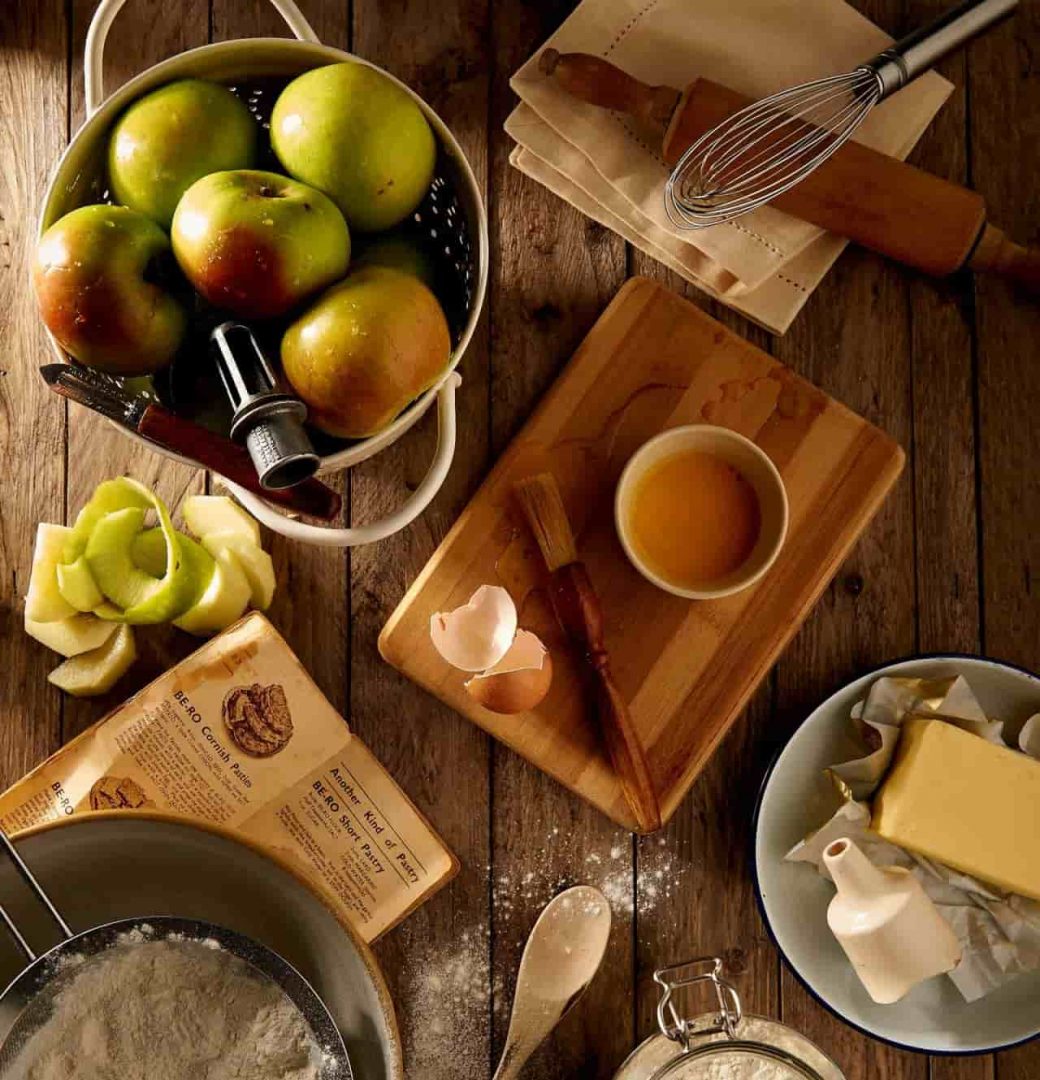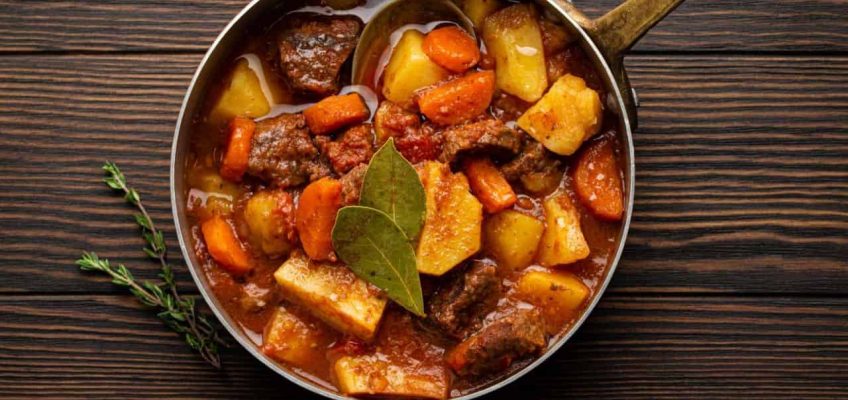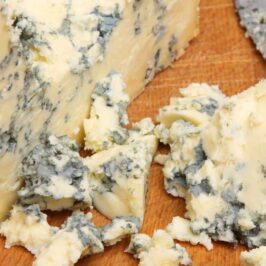As the leaves turn golden and the air becomes crisp, Britain transforms into a wonderland of autumnal flavours. From orchard fruits and root vegetables to game meats and warming spices, this season offers a bounty of delicious ingredients that celebrate the best of British produce. But what makes autumn in Britain so special for food lovers?
A season of plenty
Autumn is a time of abundance, with the harvest in full swing. Fields, orchards, and gardens overflow with produce, providing a wide array of ingredients that make their way into our kitchens. This season is a celebration of British food at its finest.
According to the Department for Environment, Food & Rural Affairs (DEFRA), the UK harvests around 5.5 million tonnes of vegetables and 3.5 million tonnes of fruit each year. Much of this bounty comes in the autumn months, making it the perfect time to enjoy locally grown produce.
What’s in Season, the best of British produce
Autumn in Britain is synonymous with an incredible variety of seasonal foods. Eating seasonally isn’t just delicious – it’s also beneficial for your health and the environment. It not only supports local farmers but also ensures you’re enjoying produce at its peak freshness. Here are some of the top ingredients to enjoy during this time:
Apples and Pears, nature’s sweet treats
Autumn is apple and pear season in Britain, with over 2,000 varieties of apples grown across the country. From the crisp Bramley, perfect for pies, to the sweet and juicy Cox’s Orange Pippin, British apples offer a range of flavours and textures. Did you know that the UK produces around 220,000 tonnes of apples annually?
October 21st is Apple Day in the UK, a celebration of apples and orchards.
Pears, too, are ready for picking in autumn. Varieties like Conference and Comice are delicious in desserts or poached in wine with spices. Whether you enjoy them raw, baked, or stewed, apples and pears bring a sweet, refreshing taste to the autumn table.
Plums, juicy Autumn gems
Autumn is also the season for plums, a fruit often underappreciated but packed with flavour. British plums, including the Victoria, Marjorie’s Seedling, and the smaller, darker Damson, reach their peak from late summer into early September. Sweet juicy Greengages are a real treat, and worth seeking out. These versatile fruits can be enjoyed fresh, baked into crumbles and pies, or even turned into rich jams and chutneys.
Plums are not only delicious but also highly nutritious, providing a good source of vitamins A and C, as well as fibre. They have a unique balance of sweet and tart flavours, making them a favourite ingredient for both sweet and savoury dishes. Damsons, in particular, are often used in traditional British preserves and liqueurs, bringing a deep, slightly tart taste to the autumn pantry.
So, whether you’re snacking on them raw, adding them to a hearty stew, or baking them into a delicious tart, plums add a burst of autumn flavour to any dish.
And then there’s quince
An often overlooked autumn fruit. Once a staple in British orchards, quinces are making a comeback. Resembling a bumpy pear with golden-yellow skin, they have a unique, fragrant aroma and are perfect for making jams, jellies, and desserts. Quince is too hard and sour to eat raw but, when cooked, they become soft and sweet.
Root vegetables, the heart of Autumn cooking
Root vegetables are the stars of the autumn harvest. Carrots, parsnips, turnips, swedes, and potatoes are all in abundance, their flavours deepened by the cooler weather. Roasting these vegetables brings out their natural sweetness, making them perfect companions to a Sunday roast or a hearty stew.
Beetroots are also in season, adding a rich, earthiness to dishes. Whether you enjoy them in a salad, soup, or pickled, they are a versatile ingredient that adds a splash of colour to any meal. They are also really good for you, as beetroots are a great source of folate, fibre, and potassium?
Squash and Pumpkin, Autumn’s golden harvest
When you think of autumn vegetables, pumpkins and squash are likely among the first things that come to mind. Rich in flavour and packed with nutrients, these versatile vegetables are perfect for soups, pies, and risottos. Britain’s climate is ideal for growing varieties like Butternut squash, Crown Prince, and the classic Pumpkin.
Now that the UK celebrates Halloween from America, the UK harvests around 15 million pumpkins each year, many of which end up carved into Halloween lanterns. But beyond their decorative use, pumpkins are a fantastic ingredient. Roasted, pureed, or baked into a sweet treat, they bring a warm, comforting flavour to any dish.
Game Meats, A taste of the wild
Autumn is game season in Britain, with venison, pheasant, partridge, and grouse all becoming available. Game meats are lean, rich in flavour, and a sustainable choice, as they are often sourced from local estates and woodlands. Each has its own distinct taste, from the deep, earthy flavour of venison to the more ‘gamey’ pheasant.
Game meat has been a staple of the British diet for centuries, and today, it is enjoying a resurgence in popularity. Chefs across the country are celebrating these wild meats in modern, creative ways. Try pairing game meats with autumn fruits like blackberries and apples for a truly seasonal dish.
Kentish Cobnuts, Sweet Chestnuts, and Walnuts
Autumn is also a great time for nuts in Britain, with the harvest of Kentish cobnuts, sweet chestnuts, and walnuts.
Kentish cobnuts, a type of hazelnut, are a unique British delicacy grown primarily in Kent. Traditionally eaten fresh, straight from the shell, or roasted for a deeper flavour. Rich in protein, fibre, and healthy fats, cobnuts are perfect for snacking or adding crunch to salads, desserts, and baking.
Sweet chestnuts are synonymous with autumn (and winter) cosy gatherings and comforting meals. Roast them over an open fire for a warming treat or use them in soups, stuffing, or even desserts like chestnut cake. High in carbohydrates and a good source of vitamins, sweet chestnuts add a subtle, sweet flavour to both sweet and savoury dishes.
Walnuts, too, are harvested in autumn, and their rich, buttery taste is perfect for everything from salads and bread to cakes and savoury sauces. British walnuts are known for their quality and freshness, making them a delicious addition to any autumn meal.
Sweet, savoury, and everything in between
Autumn is about more than just ingredients; it’s about the flavours they create. This season brings a unique blend of sweet and savoury tastes that warm the soul and satisfy the senses. Let’s take a look at some of the classic autumnal dishes that showcase these flavours.
Hearty Soups and Stews
As the temperatures drop, there’s nothing better than a bowl of steaming soup or a rich, slow-cooked stew. British autumn soups often feature root vegetables, squashes, and pulses, with classic combinations like carrot and coriander, or parsnip and apple. Add a dollop of cream, a sprinkle of nutmeg, or a handful of crispy croutons, and you have the perfect comfort food.
Stews, too, are a staple of the autumn table. Lamb, beef, or game meats are slow-cooked with vegetables, herbs, and stock to create a warming, hearty dish. One of England’s most famous dishes is Lancashire Hotpot, a simple yet delicious dish made with lamb, onions, and sliced potatoes.
Roasted vegetables and Sunday roasts
Roasting is the perfect cooking method for autumn produce. It enhances the natural sweetness of vegetables like carrots, parsnips, and squashes, while also bringing out the rich, savoury flavours of meats. The classic British Sunday roast, with roast beef, Yorkshire puddings, roasted vegetables, and gravy, is a much-loved tradition that reaches its peak in autumn.
Did you know that around 1.4 billion Sunday roasts are eaten in the UK every year? Autumn’s cool weather and dark evenings provide the ideal backdrop for this comforting, communal meal.
Pies and Puddings, sweet Autumn treats
Britain is famous for its pies, and autumn is the perfect time to indulge. Apple pies, plum crumbles, and pear tarts are just some of the delicious desserts that showcase the season’s best fruits. Add a scoop of clotted cream or custard, and you have a classic British comfort food.
Autumn is also the time to enjoy treacle tarts, sticky toffee puddings, and Parkin, a traditional gingerbread cake from Yorkshire, made with oats and black treacle. These treats, rich in warming spices like cinnamon, nutmeg, and ginger, bring a touch of sweetness to the season’s colder days.

Photo by Andy Chilton on Unsplash
Autumn Baking: The Great British Bake Off Effect
Autumn coincides with the airing of The Great British Bake Off, which has had a significant impact on home baking in the UK. Searches for baking recipes increase by 300% during the show’s run! Sales of baking ingredients spike, with flour sales increasing by 22% during the 2020 season. Traditional autumn bakes like Bara Brith (Welsh fruit bread) and Parkin (a sticky ginger cake) see renewed interest.
The new series returns to Channel 4 on Tuesday, September 2, 2025. If you want to apply for the show, click here
So with inspiration on the telly, abundant harvests, its the perfect time to try your hand at a classic Victoria sponge cake filled with homemade autumn fruit jam?
Foraging: A Seasonal Adventure
Autumn is prime foraging season in Britain, offering an opportunity to discover nature’s hidden gems. Wild mushrooms, blackberries, elderberries, sloes, and hazelnuts can all be found in Britain’s woods and hedgerows. Foraging has become more popular, with many people seeking a closer connection to nature and a more sustainable way to eat.
Remember, when foraging, it’s essential to know what you’re picking. Some wild mushrooms and berries can be toxic. Always use a guidebook or go with an experienced forager to ensure safety.
Preserving the Harvest: Jams, Chutneys, and Pickles
Autumn is a busy time for preserving summer’s bounty and preparing for winter. This tradition of “putting up” has seen a revival in recent years. Sales of jam-making equipment increased by 60% in 2020 compared to the previous year.
Chutney, a British favourite. Pickling vegetables like onions and cauliflower is a traditional way to extend the harvest.
Making preserves is not just practical, it’s a way to capture the essence of autumn to enjoy throughout the year.
Celebrating the harvest – food festivals and events
Autumn is marked by food festivals celebrating the harvest from Malton Harvest Food Lovers Festival to the Abergavenny Food Festival in Wales. The British Food Fortnight 2025 takes place from 26th September to 12th October in 2025. The Royal Horticultural Society’s Malvern Autumn Show showcases the best of seasonal produce.
A Season to Savour
Autumn is a time to celebrate food, family, and tradition. It’s a season that brings people together around the table, sharing hearty meals and sweet treats that reflect the bounty of the harvest. Whether you’re biting into a crisp apple, savouring a spoonful of creamy soup, or enjoying a roasted vegetable medley, the flavours of British autumn offer a taste experience, as rich and varied as the landscape itself.
So this autumn, why not explore your local farmers shops, try your hand at preserving, or discover a new recipe? Embrace the flavours of the harvest season and take part in Britain’s most delicious tradition.
Autumn is a feast for the senses and a season to indulge.







